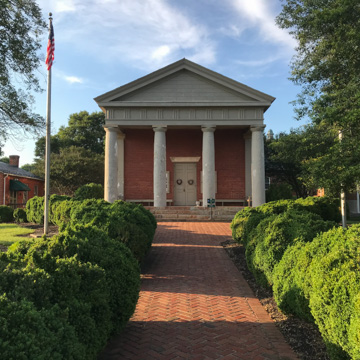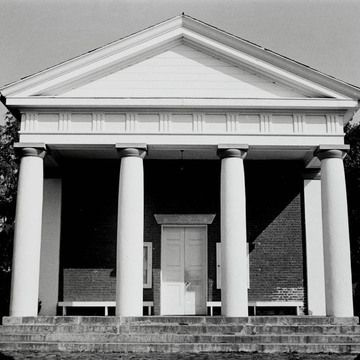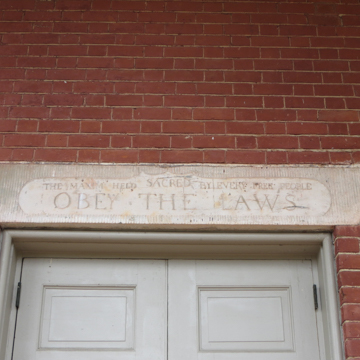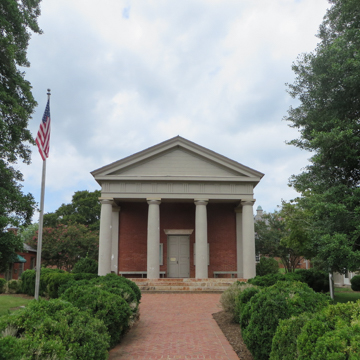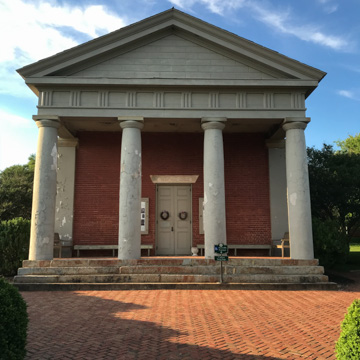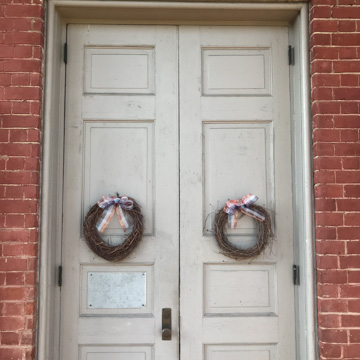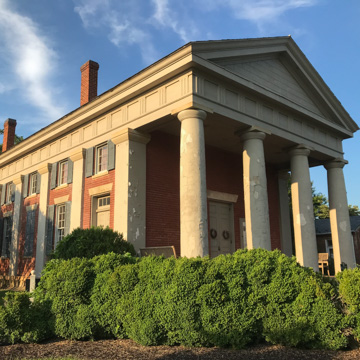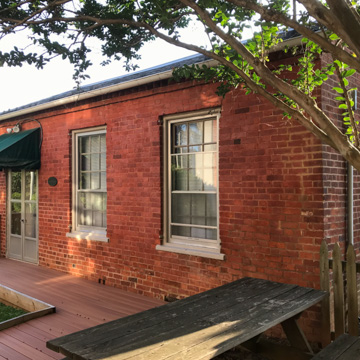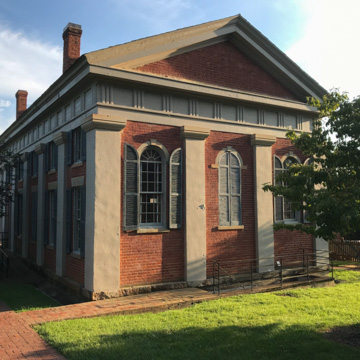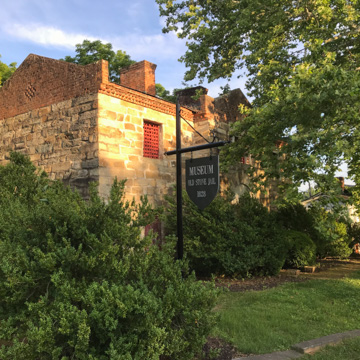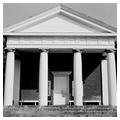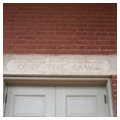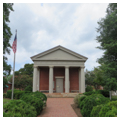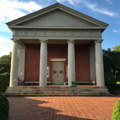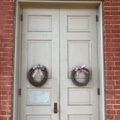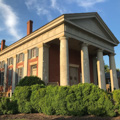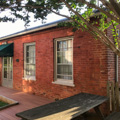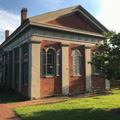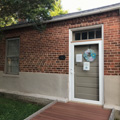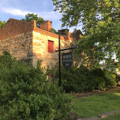Standing on the Rivanna River is the building that Talbot Hamlin described as the “Acropolis” of Palmyra. Cocke's architectural adventurousness (see Bremo, PI33) is obvious in his departure from the Roman idiom favored by his mentor Jefferson and found in other Piedmont courthouses. Cocke, one of the county's building commissioners, obtained the building specifications for the Goochland courthouse and adapted them, perhaps using Asher Benjamin's The Practical House Carpenter (1830) for the Greek Doric order. As was typical of Virginia building practices, the columns are unfluted. Cocke and Walter Timberlake, a Methodist minister, were the building's undertakers. Although constructed of brick, the courthouse made extensive use of stone for the column and pilaster capitals, the steps, water table, windowsills, and lintels. The stone lintel over the door reads: The maxim held sacred by every free people / Obey the laws. With two levels of windows, the interior is bright and airy. Most of the interior woodwork is original, with heavy balustrades and lecterns on the staircases. The stairs lead to the jury rooms above. The courthouse is unusual in having no additions. The problems of expansion led to an ill-fated attempt to abandon the courthouse in 1996 and move to a new site. The proposal met defeat at the polls. Under consideration is a courthouse annex on adjacent property. The usual auxiliary buildings surround the courthouse, the most significant being the former jail (1829), constructed of stone by John G. Hughes and similar to outbuildings at nearby Bremo. A small commercial area grew up around the courthouse, but a fire in the early twentieth century destroyed it. Strip development has sucked away most other business so that today Palmyra really is just a courthouse town.
You are here
Fluvanna County Courthouse
If SAH Archipedia has been useful to you, please consider supporting it.
SAH Archipedia tells the story of the United States through its buildings, landscapes, and cities. This freely available resource empowers the public with authoritative knowledge that deepens their understanding and appreciation of the built environment. But the Society of Architectural Historians, which created SAH Archipedia with University of Virginia Press, needs your support to maintain the high-caliber research, writing, photography, cartography, editing, design, and programming that make SAH Archipedia a trusted online resource available to all who value the history of place, heritage tourism, and learning.














